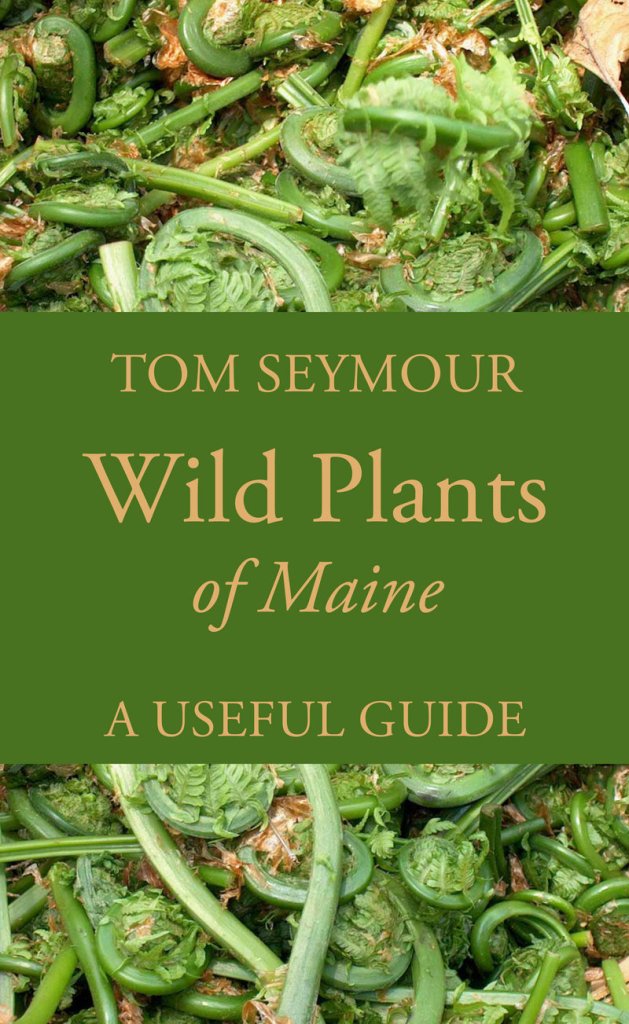If civilization were to end and there were no grocery stores or oil-delivery trucks, you would want to know Tom Seymour — or someone like him.
Seymour, 63, of Waldo, could survive.
He hunts, fishes and grows his own vegetables. And more to the point, he forages. He knows what plants are edible, and where to find them.
“Wild Plants of Maine: A Useful Guide,” published by Just Write Books in Topsham, provides information on how to find, recognize, harvest and prepare edible plants that grow in Maine fields and forest, as weeds in Maine yards and along the seashore.
Seymour eats highly prized native plants such as trillium and plants that most people want to get rid of, such as dock and Japanese knotweed.
And he writes in a conversational tone about what he has learned in a lifetime of living in Maine. He has columns in the Maine Sportsman Magazine and Maine Food and Lifestyle, and writes a blog, Wild Plants and Woolly Bears.
Q: Given your foraging and all, how much food do you actually buy in a grocery store?
A: Not much. That is the general answer, but more specifically, it really depends on the season. In the spring is when most of the wild plants are out. From late April until June, I rarely buy any produce at all.
In the summer, like now, I grow my own vegetables. I will buy a steak now and then. I raise trout and have my own trout pond, and I fish. Sometimes I have a hankering for cod or haddock, but generally speaking, I don’t buy much.
Q: Do you hunt as well?
A: I hunt and supplement my diet with that. But as I get older, it is getting so that I like fishing more than I do hunting. I’m a freelance writer, and one of my large accounts is writing three columns for Maine Sportsman Magazine, and I need to do it so I can write about it.
Q: Do you think foraging is something more people are doing?
A: It is something that more people should do. Whether or not they are, I don’t know. People hate to change, so a lot of my contemporaries wouldn’t consider the kind of life I have. It is sort of like people who say, “As long as I can buy oil, I won’t buy a wood stove.”
But I think people are showing a newfound interest in it. I get calls all the time from people who want me to take them around and show them how to forage.
Q: Of all the things you forage, what are your favorites?
A: That’s a tough question. I guess I have to go with the things I freeze. I put up a lot of lamb’s quarters (a weed that grows in cultivated ground, next to roads and near manure piles, which Seymour says is like a baby spinach.) Then there is Japanese knotweed or bamboo (considered invasive and very common), which I make a chutney out of and blanch it. And goosetongue or seaside plantain is right up there as a favorite.
I love dandelion greens and fiddlehead ferns, but I didn’t mention them because they are so common. I canned two batches of dandelion greens because they lend themselves to canning. They are great after we get a few frosts, because the frost takes the bitterness away.
The first thing you get in the year is groundnuts. The ice floes dislodge these tubers, and you can find them along streams right up until fall.
Q: Are you working on another book?
A: I will be. I have written a lot of guides for Globe Pequot Press and “Maine Off the Beaten Path,” and did “Hidden World Revealed” naturalist essays, also for Just Write Books.
That is kind of what I do, but I just don’t know what it will be. I’ve done guide books, but I can’t do hunting or fishing because once you get a title out, you can’t do something similar for another publisher. I do have to thank Globe Pequot, because I did “Foraging New England” for them, and they gave me permission to do this for Just Write Books because it was Maine-specific. That was kind of them.
But in winter when I can’t be out foraging or giving seminars, I just sit around and work on a book.
One new column is for Maine Food and Lifestyle, a fairly new glossy, slick magazine with all these chefs in pouffy hats, and I thought it would be good for them to have someone like me as a counterpoint. I wrote them, and now I’m doing a wild edible column for them.
Q: You don’t distinguish between native plants and imports?
A: No, I like them all. I just planted Japanese knotweed on my property because the posting problem gets worse all the time. My favorite patch just got bought and posted.
I consider them a wild plant if they can grow on their own at their own will.
Q: Is there anything I should have asked that I didn’t?
A: We should probably mention hazards. There is a possibility of people getting into danger by finding a toxic wild plant. It is not much different than wild mushrooms. My advice is to never try anything until you are absolutely certain it is what you think it is.
Tom Atwell can be contacted at 791-6362 or at:
tatwell@pressherald.com
Send questions/comments to the editors.


